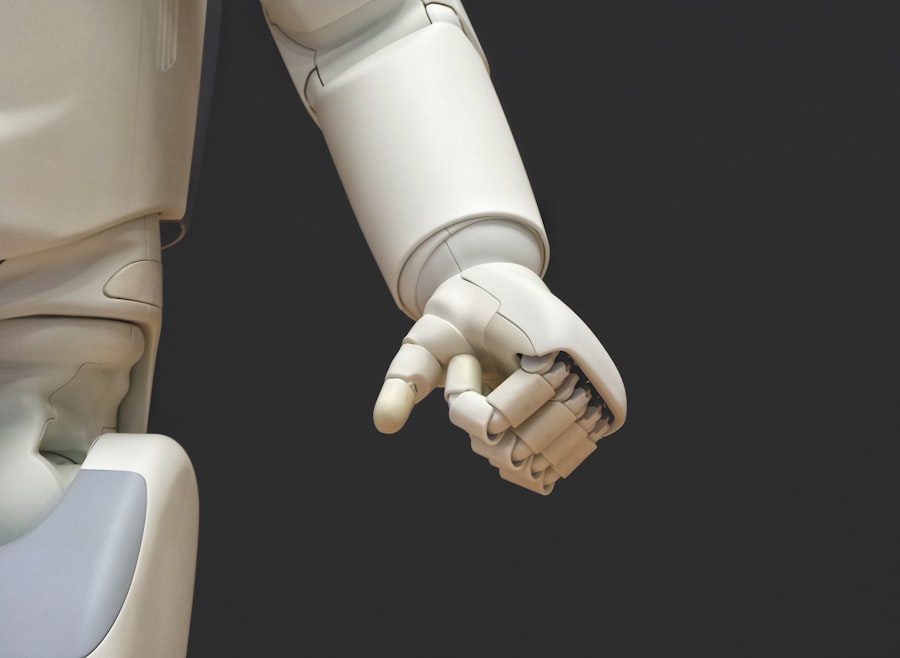The introduction of autonomous robots has transformed numerous industries, including warehousing. These advanced machines utilize sophisticated sensors, artificial intelligence, and machine learning to perform tasks traditionally done by human workers. In warehousing, autonomous robots can navigate complex environments, transport goods, and assist with inventory management.
The rapid growth of e-commerce has increased demand for efficient warehousing solutions, leading companies to adopt automation strategies. Integrating autonomous robots into warehousing operations improves efficiency and addresses challenges such as labor shortages and rising operational costs. The use of autonomous robots in warehousing represents a fundamental change in how goods are stored, retrieved, and managed.
These robots can operate continuously, increasing throughput and reducing order fulfillment times. Their ability to communicate with other warehouse systems enables real-time data analysis and decision-making. As businesses aim to meet customer expectations for faster delivery and improved service, autonomous robots play an increasingly important role.
This article examines the diverse impacts of these machines on warehousing operations, including their contributions to efficiency, productivity, inventory management, safety, and future developments.
Key Takeaways
- Autonomous robots in warehousing are revolutionizing the way goods are stored, picked, and transported, leading to increased efficiency and productivity.
- The impact of autonomous robots on efficiency and productivity is significant, as they can work 24/7 without breaks, leading to faster order fulfillment and reduced labor costs.
- Autonomous robots play a crucial role in inventory management by accurately tracking and locating items, reducing errors and minimizing stockouts.
- Safety and collaboration are key considerations when integrating autonomous robots in warehousing, as they must work alongside human workers in a harmonious and safe manner.
- The future of warehousing is evolving with advancements in autonomous robot technology, including the use of AI, machine learning, and advanced sensors to further improve operations and capabilities.
The Impact of Autonomous Robots on Efficiency and Productivity
One of the most significant advantages of incorporating autonomous robots into warehousing operations is the remarkable boost in efficiency they provide. These robots are designed to perform repetitive tasks with precision and speed that far surpass human capabilities. For instance, they can swiftly navigate through aisles, pick items from shelves, and transport them to designated locations without the need for breaks or downtime.
This continuous operation not only accelerates the overall workflow but also minimizes the risk of human error, which can lead to costly mistakes in order fulfillment. As a result, warehouses that deploy autonomous robots often experience a substantial reduction in order processing times, allowing them to meet the increasing demands of customers who expect rapid delivery. In addition to enhancing efficiency, autonomous robots also contribute significantly to overall productivity within warehousing environments.
By automating mundane tasks such as sorting, packing, and transporting goods, human workers can focus on more complex and value-added activities that require critical thinking and problem-solving skills. This shift not only improves job satisfaction among employees but also fosters a more innovative workplace culture. Furthermore, the data collected by autonomous robots during their operations can be analyzed to identify bottlenecks and inefficiencies in the workflow.
This data-driven approach enables warehouse managers to make informed decisions that optimize processes and resource allocation, ultimately leading to higher productivity levels across the board.
The Role of Autonomous Robots in Inventory Management
Inventory management is a critical aspect of warehousing that directly impacts a company’s bottom line. Autonomous robots play a pivotal role in streamlining this process by providing real-time visibility into stock levels and locations. Equipped with advanced scanning technology and sensors, these robots can conduct regular inventory checks without disrupting ongoing operations.
This capability not only ensures accurate stock counts but also helps identify discrepancies that may arise due to theft, damage, or misplacement. By maintaining an up-to-date inventory database, businesses can make informed purchasing decisions and reduce the risk of overstocking or stockouts. Moreover, autonomous robots facilitate more efficient inventory replenishment processes.
When stock levels fall below predetermined thresholds, these robots can automatically trigger reordering processes or transport items from storage areas to picking zones. This proactive approach minimizes delays in order fulfillment and enhances customer satisfaction by ensuring that products are readily available when needed. Additionally, the integration of autonomous robots with warehouse management systems (WMS) allows for seamless communication between different components of the supply chain.
This interconnectedness enables businesses to respond swiftly to changes in demand and optimize their inventory management strategies accordingly.
Safety and Collaboration: How Autonomous Robots Work Alongside Human Workers
The introduction of autonomous robots into warehousing environments has raised important questions about safety and collaboration between machines and human workers. Contrary to fears that automation may lead to job displacement, many organizations have found that these robots can enhance workplace safety by taking on hazardous tasks that pose risks to human employees. For instance, autonomous robots can handle heavy lifting or navigate through dangerous areas where accidents are more likely to occur.
By delegating such responsibilities to machines, companies can create a safer working environment while allowing human workers to focus on tasks that require their expertise. Collaboration between autonomous robots and human workers is essential for maximizing operational efficiency. Many modern warehouses employ a hybrid model where both robots and humans work side by side.
In this setup, robots can assist human workers by transporting items or providing real-time data on inventory levels, while employees oversee complex decision-making processes that require human judgment. This collaborative approach not only enhances productivity but also fosters a culture of teamwork within the workplace. As technology continues to evolve, training programs will be crucial in equipping employees with the skills needed to work effectively alongside autonomous systems.
The Future of Warehousing: Advancements in Autonomous Robot Technology
As technology continues to advance at a rapid pace, the future of warehousing is poised for even greater transformation through innovations in autonomous robot technology. One promising area of development is the integration of artificial intelligence (AI) and machine learning algorithms into robotic systems. These advancements will enable robots to learn from their experiences and adapt their behaviors based on changing conditions within the warehouse environment.
For instance, AI-powered robots could optimize their routes in real-time based on traffic patterns or obstacles encountered during operation, further enhancing efficiency. Additionally, advancements in robotics are likely to lead to the development of more versatile machines capable of performing a wider range of tasks within warehouses. Future autonomous robots may be equipped with advanced manipulation capabilities that allow them to handle delicate items or perform complex assembly tasks.
This versatility will enable businesses to streamline their operations further by reducing reliance on multiple specialized machines. As companies continue to invest in research and development in this field, we can expect to see an increasing number of innovative solutions that redefine traditional warehousing practices.
Challenges and Limitations of Implementing Autonomous Robots in Warehousing
Despite the numerous benefits associated with autonomous robots in warehousing, several challenges and limitations must be addressed before widespread adoption can occur. One significant hurdle is the initial investment required for implementing robotic systems. The cost of purchasing advanced robotic technology, along with necessary infrastructure upgrades and ongoing maintenance expenses, can be prohibitive for many organizations—especially smaller businesses with limited budgets.
Additionally, integrating these systems into existing workflows may require substantial changes in processes and employee training programs. Another challenge lies in the technological limitations of current robotic systems. While autonomous robots have made significant strides in navigation and task execution, they still face difficulties when it comes to handling unpredictable environments or complex tasks that require fine motor skills.
For example, navigating crowded aisles filled with obstacles or adapting to sudden changes in layout can pose challenges for even the most advanced robotic systems. As such, companies must carefully evaluate their specific needs and capabilities before committing to automation solutions.
Case Studies: Successful Integration of Autonomous Robots in Warehousing Operations
Several companies have successfully integrated autonomous robots into their warehousing operations, showcasing the potential benefits of this technology. One notable example is Amazon, which has leveraged robotics extensively across its fulfillment centers. By employing Kiva robots—autonomous mobile units designed for transporting goods—Amazon has significantly increased its order fulfillment speed while reducing labor costs.
These robots work collaboratively with human employees to streamline processes such as picking and packing orders, resulting in improved efficiency and customer satisfaction. Another compelling case study is that of Walmart, which has begun implementing autonomous floor scrubbers in its distribution centers. These machines not only clean warehouse floors but also collect valuable data on inventory levels and product movement throughout the facility.
By automating this task, Walmart has freed up employees to focus on more strategic activities while ensuring a clean and safe working environment. These examples illustrate how organizations across various sectors are harnessing the power of autonomous robots to enhance their warehousing operations and remain competitive in an increasingly automated world. In conclusion, the integration of autonomous robots into warehousing operations represents a transformative shift that promises enhanced efficiency, productivity, and safety while addressing challenges related to inventory management and labor shortages.
As technology continues to evolve, businesses must navigate both the opportunities and challenges presented by this automation revolution. Through careful planning and strategic implementation, organizations can harness the full potential of autonomous robotics to redefine their warehousing practices for years to come.
In the context of technological advancements in warehousing, it’s fascinating to see how other sectors are also being transformed by modern technology. For instance, the education sector is significantly benefiting from tailored technological solutions, such as choosing the right laptops for students. This is crucial for enhancing learning experiences and ensuring students have access to the necessary tools for their education. For more insights on selecting the appropriate technology for educational purposes, you can read more in this related article: How to Choose a Laptop for Students. This guide provides valuable information that can help in making informed decisions, much like how autonomous robots are revolutionizing warehousing by optimizing operations and increasing efficiency.
FAQs
What are autonomous robots in warehousing?
Autonomous robots in warehousing are robotic systems that can operate without human intervention to perform tasks such as picking, packing, and transporting goods within a warehouse or distribution center.
How do autonomous robots transform warehousing?
Autonomous robots transform warehousing by increasing efficiency, accuracy, and speed of operations. They can handle repetitive and labor-intensive tasks, optimize inventory management, and improve overall productivity in the warehouse.
What are the benefits of using autonomous robots in warehousing?
The benefits of using autonomous robots in warehousing include reduced labor costs, improved safety, increased throughput, enhanced accuracy, and the ability to adapt to changing demand and operational needs.
What types of tasks can autonomous robots perform in a warehouse?
Autonomous robots can perform a variety of tasks in a warehouse, including goods transportation, inventory management, order picking, packing, and sorting, as well as other repetitive and time-consuming tasks.
What are the challenges of implementing autonomous robots in warehousing?
Challenges of implementing autonomous robots in warehousing include initial investment costs, integration with existing warehouse systems, maintenance and technical support, as well as potential job displacement and the need for workforce retraining.



